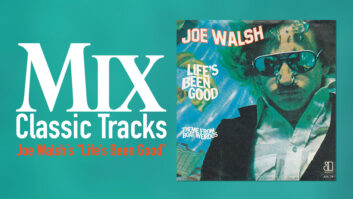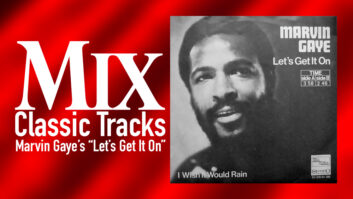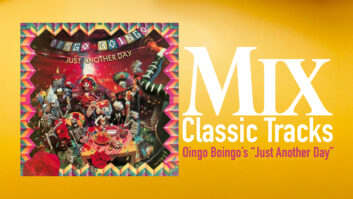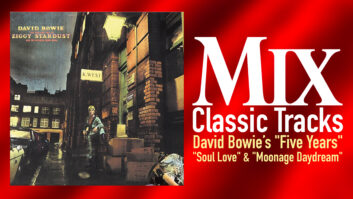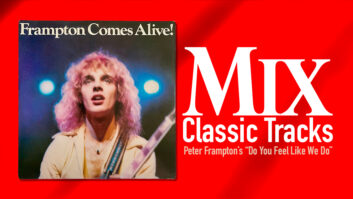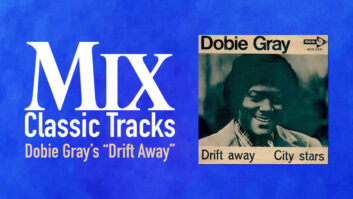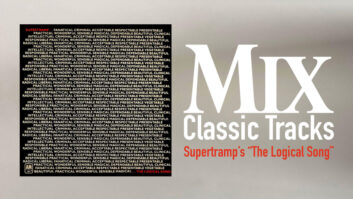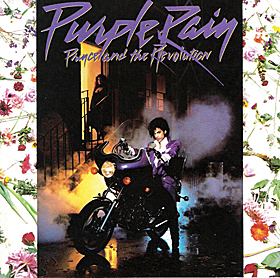
This year marks the 25th anniversary of the track that is, perhaps, most emblematic of the entire Minneapolis music scene. “Purple Rain” was destined to be a Number One single and would pull its eponymously named soundtrack LP to the same position on the album charts when it was released on June 25, 1984. The film of the same name still lands in most Top Ten lists of music-themed movies, and it graphically fills in the details of family strife and artistic angst painted by the song’s sparse lyrics. But as emotionally wrenching as “Purple Rain” is, in all of its incarnations, the track was the nose cone of a very precisely guided missile assembled by Prince — who had already had chart successes with hit singles like “1999,” “Little Red Corvette” and “Delirious.” It was very deliberately intended to take him to true superstardom, and it worked. The combination of a slate of brand-new songs that meshed R&B, soul, pop and hard rock with a reinvigorated band, The Revolution — featuring Lisa Coleman and Wendy Melvoin (who would go on to their own music and scoring successes as Wendy and Lisa, aka Girl Bros. — gave Prince the creative and economic momentum to propel him for the next quarter-century.
Prince’s rocket would be fired from an odd launching pad. The First Avenue club in downtown Minneapolis had been the locus of the city’s bubbling music scene, a career crucible for acts including The Replacements, Soul Asylum and Hüsker Deü, as well as Prince, who headlined there, riding on early hits like “Dirty Mind.” (Minneapolis was a fairly progressive place, but most local black artists, including Jimmy Jam and Terry Lewis, preferred a venue called the Nacirema Club — “American” spelled backward.) Instead of taking the new songs into the studio, Prince instead opted to do them as a live recording. The premise was a benefit for the Minneapolis Dance Company, which assured a relatively weak turnout and a manageably sized audience that would provide the intimacy and immediacy that would electrify the recordings without going over the brink to mark it as a live concert recording. The cheers, clapping and whistles are all present on the extended coda of the album version, which runs close to nine minutes long. Another argument for the live recording is that several of these tracks would be featured as live performances in the film Purple Rain, taking place in the same club.
The performance was captured by David Z, who had pursued a career as a songwriter and recording artist in Los Angeles, but had returned to his native Minneapolis as an engineer and producer. He began working with Prince in the group Grand Central in 1978, and in 1979 the four demo sides he co-produced and engineered garnered Prince a deal with Warner Bros. Records. Z continued working with the artist, engineering on his first and third albums, the former with Los Angeles-based engineer Tommy Vicari, whom Z had met when Vicari engineered his publishing demos at A&M Studios. “Warners wanted an engineer with credits to do the first album,” says Z, who’d have his own hit-record credit a few months later when his production of Lipps Inc.’s “Funkytown” climbed the pop charts.
Z’s connection to Prince is deeper than technical and professional — his older brother, Cliff Rifkin, was the regional promotion executive for Warners in Minneapolis and had facilitated Prince’s signing to the label, and his younger brother, Bobby Z, had become Prince’s drummer in the Revolution. So Z wasn’t surprised when he was asked to engineer the tracking of a live recording, set for August 3, 1983, even though he wasn’t completely sure what its outcome was supposed to be. “With Prince, you never knew,” he says. “I thought we were recording a concert, but I wasn’t sure if it was going to be a record, too. I knew they were working on the movie, as well. You just had to go in prepared to record whatever it was going to be as well as you could.”
Prince’s road manager, Alan Leeds, asked for and got what he regarded as the best remote truck available: Record Plant’s Black Truck, crewed at the time by Dave Hewitt and Kooster McAllister — teammates who would go on to become leading competitors in the remote recording business. The truck was well-equipped for its time, with a custom 44×24 console recording to a pair of Ampex 1200 2-inch tape decks. The truck’s outboard included four UREI 1176 compressor/limiters, two UREI LA-3A compressors and two dbx 160 compressors. Monitoring was by Westlake speakers with Bryston 4B amplifiers. “At the time, you could not do better than that, between that equipment and Kooster and Dave Hewitt working with you,” says Z.
Inside the club, the stage was set as it would be for a live show — vocal microphones were Shure dynamic 57s, which were also used on Prince and Wendy Melvoin’s guitar amps. Two pairs of AKG 451 condenser microphones were employed for audience and ambience tracks, one pair taped underneath left and right balconies near the stage and the other pair under a loft in the rear of the room. The drums were similarly miked in a conventional manner, with an AKG D-12 inside the kick drum, 57s on the top and bottom of the snare, Sennheiser 421 dynamic cardioid microphones on the rack toms, a Neumann KM84 condenser on the hi-hat and a pair of 451s as overheads. But there was also a new wrinkle: A pair of LinnDrum LM1 drum machines were part of the percussion package; one would run continuous loops during songs while the other was to be triggered by Bobby Z’s snare drum via a small condenser microphone mounted inside the drum.
“Prince was very innovative — he wanted the Linn’s snare sounds but wanted the feel of a drummer,” says Bobby Z. “You could still get a lot of emotion and human variation into the playing, but have access to a wider range of sounds. We look at that as normal now, but in 1983 that was pretty cutting-edge.”
“Purple Rain” is first and foremost an arena-rock ballad, and Bobby Z, used to playing an array of percussion styles around Prince’s increasingly eclectic songbook, says laying into the track as a rock song came naturally. “Prince wasn’t telling me what to play,” he says. “You knew right off what the song needed.”
In the Truck
As showtime neared, David Z sat in the truck, checking signal path and getting sounds as the band ran through its soundcheck; Hewitt would help monitor level while McAllister seconded as needed. Z says he put limiting and compression in the obvious places — LA-3As mainly on drums and vocals that would grow louder as the energy of the performance built. “I dialed in a little bit of effects and EQ, but what was going to tape was pretty much what they were hearing inside the club,” he says, referencing what he had learned doing several King Biscuit Flour Hour concert broadcasts. The band’s own monitoring would be the monitor mix onstage. But the focus was on the recording levels. “We had three sets of eyes on the meters,” says Z, including tape op Paul Prestopino in the truck. “It was getting louder as the show went on, and if this was going to be a record, distortion was something we couldn’t go back and fix.”
“Purple Rain” was the encore of the set, and possibly its most intense number. Some distortion was inevitable, as was the tape noise audible in the quiet passages in between peaks — something Z explains as a result of precautionary lower input levels.
When the show concluded, Z spot-checked the 2-inch reels for drop-outs and other possible problems. The only one he thought might be an issue was the weak bass sound due to the use of a wireless transmitter from the bass to the amp. “Wireless stage technology for musical instruments just wasn’t there yet,” he says.
David Z’s role in recording “Purple Rain” had a coda as unique as the one on the song. “Prince drove up to the truck after the show and asked how it sounded,” he recalls. “I was about to answer when a girl wearing a raincoat and nothing else stepped off the curb and flashed Prince. Then he drove away. That was pretty much our post-recording conversation. It was like a Fellini movie.”
On to L.A.
The tapes were sent to Studio 3 at Sunset Sound in L.A. with David Leonard, with whom Prince had worked at the studio on previous records, including “1999” and “Little Red Corvette.” (This was prior to the establishment of Paisley Park, Prince’s Minneapolis studio, which opened in 1985.) Leonard recalls that there were several overdubs added to “Purple Rain,” as there were to other tracks from the recording, although he is less certain about exactly what was replaced or augmented.
“The process with Prince was that you would wait for him to come in and set him up to do whatever he wanted to that day,” Leonard explains. “He does almost everything himself; he even records his own vocals using a U47 on a boom stand over the console. If he needed you to do a punch or a patch, he’d ask. Otherwise, he’d do his own punching. He was hands-on for everything; he was driving the bus.”
This extended to playing any of the replaced instrument parts. Leonard would have Prince’s favored collection of outboard gear available. These included the API 440 EQs built into the custom 1977 40-input/8-bus API DeMideo console in Studio 3, Universal Audio LA-2A leveling amplifier and UREI 1176 compressor/limiters, as well as the EMT digital 250 reverb and Lexicon Delta T digital delays, both of which are used heavily on “Purple Rain,” along with the studio’s Number 2 live chamber. The delay return on the vocal is also sent to the same reverb, which greatly thickened the sound. But Leonard believes that most, if not all, of the lead vocal is from the club recording. “He is a superhuman vocalist,” he says of Prince, renowned for his four-octave range. “And there is a lot of the ambience tracks mixed in there, too.”
A live recording has its artifacts and Leonard found ways around them. “The [drum] overheads have a lot of bleed in them so we needed to gate that stuff out,” he says. “We also gated the live snare to make it cleaner and bit snappier.” The reverse sound effect just before the first verse of the song was likely a flipped snare or cymbal, Leonard reckons, though he says Prince would often do his own onomatopoeia versions of those effects. “There were always lots of edits,” he says, noting that he would also keep three half-inch 2-track decks at the ready for crossfades between songs or if Prince decided to overdub atop a mixed track.
The final touch on “Purple Rain” was the string section, also recorded at Sunset Sound’s Studio 3, from an arrangement by Lisa Coleman’s brother David. A quartet was recorded by Leonard using a pair of Telefunken 251 microphones for the violins on a Neumann U47 on the cello. It might have been the only relatively conventional step in the entire process.
Note: Prince’s proclivity for personally handling virtually every aspect of his recordings seems to foster a kind of Men in Black-type memory-erasure effect. Neither David Z nor David Leonard recalls the other being in the truck during the recording of “Purple Rain,” and neither Kooster McAllister nor Dave Hewitt could state without reservation which of the two Davids was at the truck’s console that night. It could also be due to the curiously large number of people named David involved with this and other Prince recordings. The narrative above is based on David Z’s recollections of the tracking and David Leonard’s memory of the overdub sessions. Also, the Sunset Sound Web page lists Susan Rogers and Peggy (Mac) McCreary as engineers on the work done there on Purple Rain.
